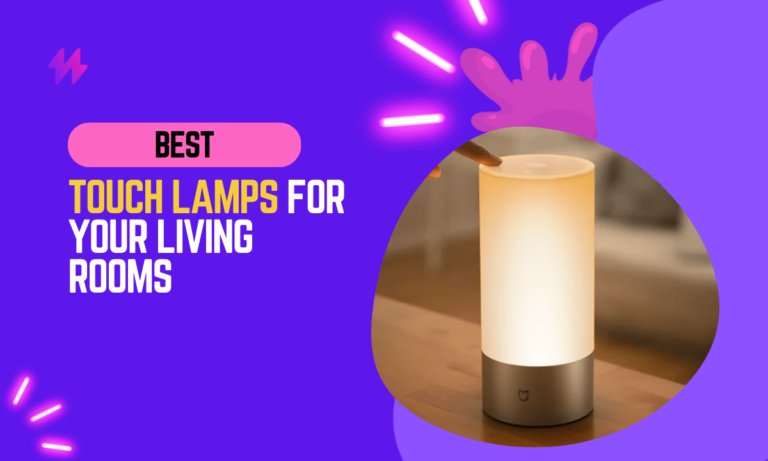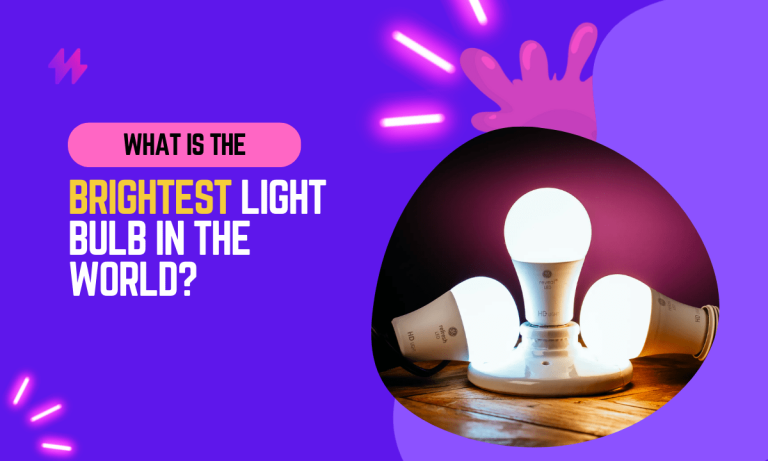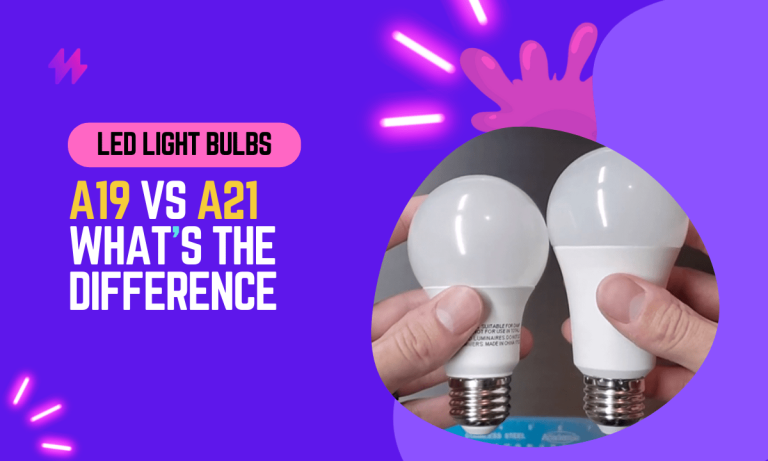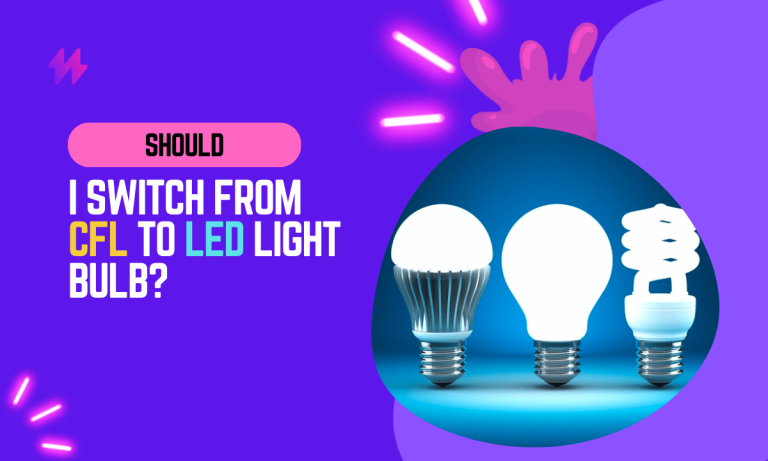The Best Light Bulbs for Indoor Plants
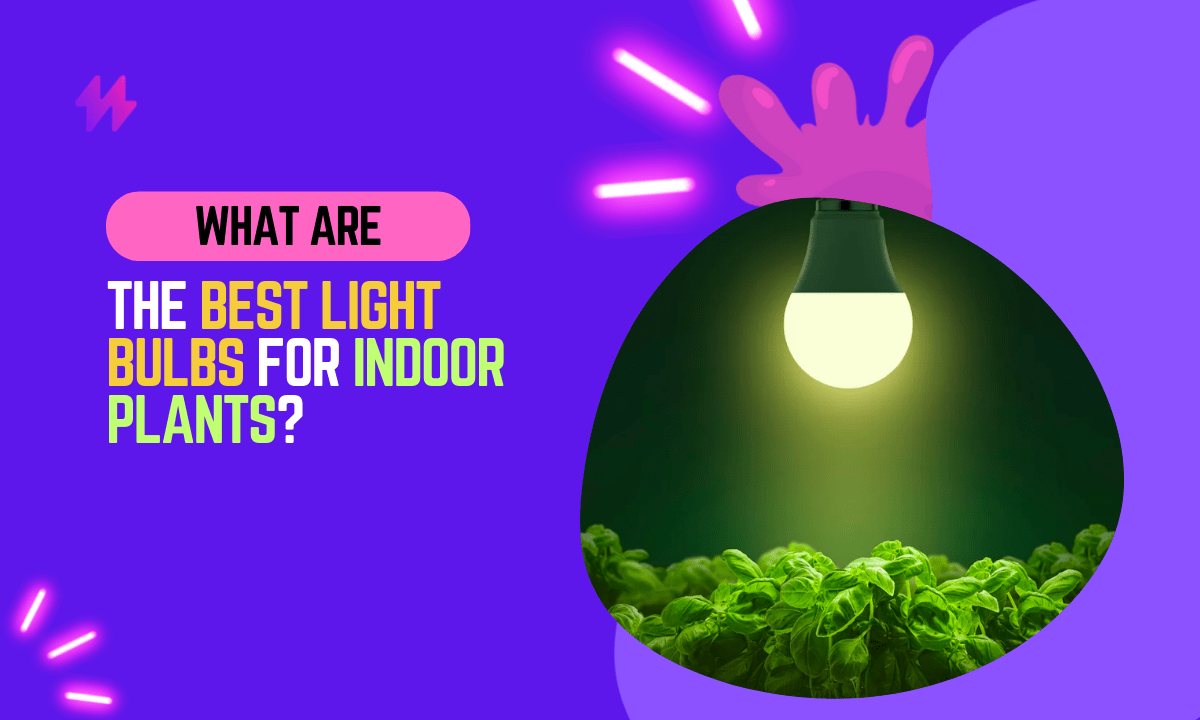
Do you have trouble growing plants indoors? If so, you’re not alone. Many people find it difficult to create the right conditions for plants to thrive indoors. One of the most important factors is lighting.
Indoor plants need a lot of light to grow properly. But not just any light will do. Plants need light that is bright enough and has the right spectrum of wavelengths.
Traditional incandescent light bulbs are not a good choice for growing plants indoors. They produce a lot of heat, which can damage plants. They also emit a lot of light in the red and orange wavelengths, which is not ideal for plant growth, you can read our detailed blog on best light for plan growth.
LED lights are a much better option for growing plants indoors. They produce very little heat, so they don’t damage plants. And they emit a wider spectrum of light, which is more beneficial for plant growth.
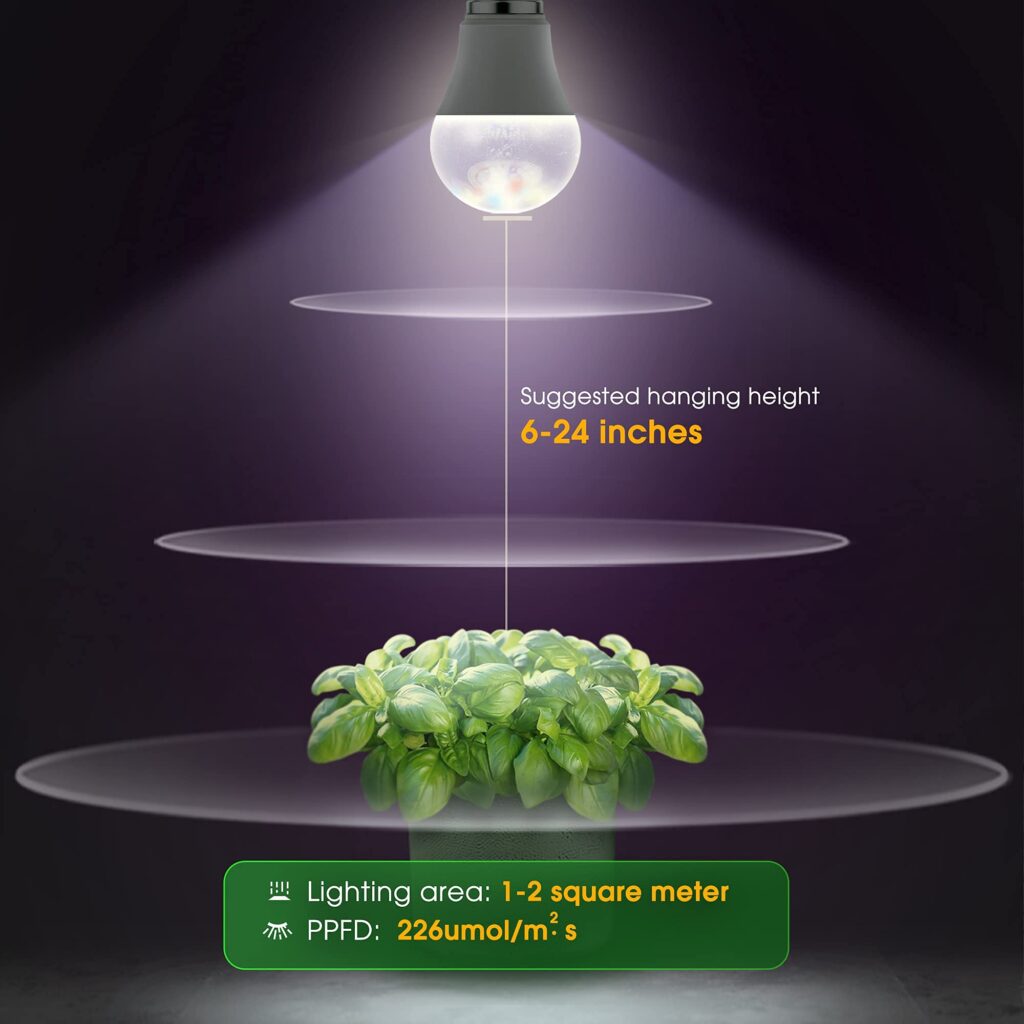
I have been working with LED lights for over 10 years. I have helped hundreds of people grow beautiful plants indoors. I know what it takes to create the perfect environment for plants to thrive. I am passionate about helping people grow plants. I believe that everyone should have the opportunity to enjoy the beauty and benefits of plants, regardless of where they live.
If you are looking for a solution to your indoor plant problems, you have come to the right place. In this blog, I will share my tips and tricks for growing beautiful plants indoors.
I will cover everything from choosing the right light bulbs to watering and fertilizing your plants. I will also provide you with a step-by-step guide to starting your own indoor garden.
So if you’re ready to start growing beautiful plants indoors, be sure to check out my blog. I promise you won’t be disappointed.
To maximize your indoor gardening success, it’s essential to explore different grow lights best suited for your specific plants. Whether you opt for led light bulbs or fluorescent lights, the right choice can significantly enhance the growth and beauty of your house plants.
The Best Light Bulbs for Indoor Plants: Grow Light Bulbs Explained
Indoor plants can add a touch of life and greenery to any home, but they can also be a challenge to keep alive. One of the most important factors for growing healthy indoor plants is providing them with the right amount of light.
While natural sunlight is ideal, it’s not always possible to provide enough light for indoor plants, especially during the winter months. This is where artificial lighting comes in.
There are a number of different types of light bulbs that can be used to grow indoor plants, each with its own advantages and disadvantages. In this article, we’ll discuss the different types of light bulbs available and help you choose the best one for your indoor plants.
To bring your indoor garden to life, carefully assess the light exposure plants in your collection and choose appropriate grow bulbs. By using plant-specific grow light options like led grow lights and full-spectrum bulbs, you can meet the lighting needs of various plant varieties, ensuring they thrive in any home decor setup.
Exploring Light Bulb Options for Indoor Plants
The three main types of light bulbs that are commonly used for growing indoor plants are incandescent bulbs, fluorescent bulbs, and LED bulbs.
When setting up your indoor garden, consider the light setup carefully to ensure each plant receives the proper light levels that cater to their specific needs. The right grow light type, whether it’s using LED bulbs or full-spectrum lighting, can help achieve ideal conditions for not just flowering plants but also low-light plants in your collection.
- Incandescent bulbs are the most common type of light bulb and are relatively inexpensive. However, they are also the least efficient type of light bulb, meaning that they produce a lot of heat and waste energy.
- Fluorescent bulbs are more efficient than incandescent bulbs and produce less heat. However, they can also be more expensive.
- LED bulbs are the most efficient type of light bulb and produce very little heat. They are also the most expensive type of light bulb, but they can last for many years.
Selecting the Ideal Light Bulb for Your Indoor Plants
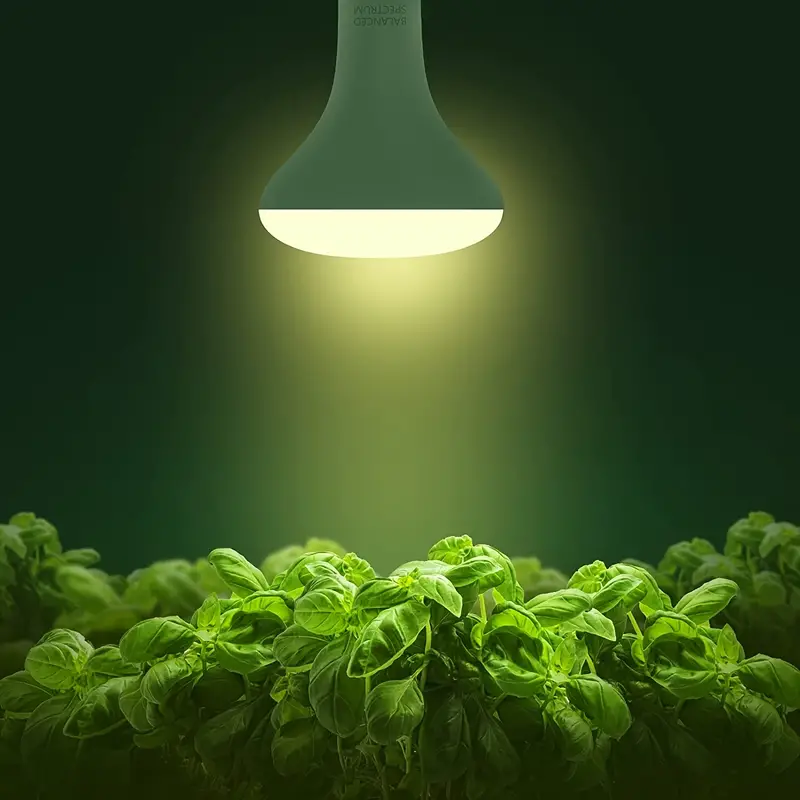
When choosing a light bulb for your indoor plants, you need to consider a few factors, including the type of plant, the amount of light the plant needs, and your budget.
Choosing the right bulb for your indoor plants involves understanding the concept of light absorption and how different types of bulbs affect plant growth. Incorporating various light fixtures like LED (light-emitting diode) and fluorescent bulbs can create a versatile light setup that caters to both high-light plants and low-light houseplants in your indoor garden systems.
- Type of plant: Some plants need more light than others. For example, succulents and cacti can tolerate low-light conditions, while flowering plants and leafy greens need more light.
- Amount of light: The amount of light a plant needs is measured in foot-candles. A foot-candle is a unit of illuminance that measures the amount of light that falls on a surface from a single candle placed one foot away.
- Your budget: The cost of a light bulb will vary depending on the type of bulb and the wattage.
Optimizing the Use of Light Bulbs for Indoor Plants: A Comprehensive Guide
Once you’ve chosen the right light bulb for your indoor plants, you need to know how to use it properly.
To properly utilize your chosen grow light, ensure that it is set at the correct distance from your plants to optimize light distribution without causing stress. Experimenting with light settings can help you find the best arrangement for different indoor gardens, enabling both light-loving plants and low-light plants to flourish together under your care.
- Place the light bulb in a position where it will provide the most light to your plants. For example, if you have a south-facing window, you can place the light bulb on a table near the window.
- Adjust the height of the light bulb so that it is about 12 inches above the tops of your plants. This will help to ensure that the plants receive the right amount of light.
- Turn on the light bulb for 12-16 hours per day. This is the amount of time that most plants need to receive in order to thrive.
Troubleshooting Tips: Solutions for Light Bulbs Used for Indoor Plants
If your indoor plants are not thriving, even though you are using the right type of light bulb, there may be a few things that you can do to troubleshoot the problem.
If your indoor plants are not thriving, even though you are using the right type of light bulb, there may be a few things that you can do to troubleshoot the problem. For optimal plant growth, it’s important to ensure that your indoor grow light emits a broad spectrum of colors, mimicking the natural light they would receive outdoors. Additionally, incorporating a mix of bright lights and full-spectrum lights can enhance the growing light setup for various plant types in your indoor garden.
- Check the light bulb to make sure that it is working properly: The light bulb should be emitting a bright, white light. If the light bulb is dim or flickering, it is not providing enough light for your plants.
- Check the position of the light bulb: The light bulb should be placed in a position where it will provide the most light to your plants. If the light bulb is too far away from the plants, they will not receive enough light.
- Adjust the height of the light bulb: The light bulb should be about 12 inches above the tops of your plants. If the light bulb is too high, the plants will not receive enough light.
- Increase the amount of time that the light bulb is on: Most plants need to receive 12-16 hours of light per day. If your plants are not thriving, you may need to increase the amount of time that the light bulb is on.
FAQs: Your Guide to Using Light Bulbs for Indoor Plants

Below you can find the most widely asked questions on the best light bulbs for indoor plants
Below you can find the most widely asked questions on the best light bulbs for indoor plants. Understanding the differences in light types, such as LED and fluorescent bulbs, can help you choose the best lamp for various indoor plants, ensuring they receive the necessary light for optimal growth. Furthermore, incorporating smart grow lights and durable grow light stands can transform your indoor garden into a thriving oasis filled with vibrant, healthy plants.
Benefits of Using LED Light Bulbs for Indoor Plants: Why They are Essential for Growth
- Improved plant growth and development: Light bulbs provide plants with the light they need to photosynthesize, which is the process by which they convert sunlight into energy. This energy is used to grow, develop, and produce flowers and fruits.
- Extended growing season: Light bulbs can be used to extend the growing season for plants that would otherwise not be able to grow in your climate. This is especially helpful for gardeners in colder climates who want to grow warm-weather plants.
- Increased yields: LED Light bulbs can help you to grow plants by providing them with the light they need to grow and develop properly. This can lead to more flowers, fruits, and vegetables.
- Improved quality of produce: Light bulbs can help you to improve the quality of your produce by providing plants with the light they need to produce healthy, flavorful fruits and vegetables.
- Fewer pests and diseases: Light bulbs can help to reduce the number of pests and diseases that attack your plants by creating a more hostile environment for them. This is because pests and diseases are more likely to thrive in dark, humid conditions.
Selecting the Optimal Light Bulb for Indoor Plants: Expert Insights
The best type of light bulb for plants indoors depends on the specific needs of your plants. However, some general guidelines can be followed.
Selecting the right type bulbs for your indoor plants is crucial for creating a thriving environment, especially when considering their specific light needs. By strategically incorporating fluorescent bulbs use and the various properties of incandescent grow lights, you can effectively support both light-loving and low light plants in your indoor gardening efforts.
- For most plants, a full-spectrum light bulb is the best option. Full-spectrum light bulbs emit a wide range of wavelengths, which is what plants need to photosynthesize.
- If you are growing plants that require a lot of light, you may need to use a high-intensity light bulb. High-intensity light bulbs emit more light per watt than standard light bulbs, so they can provide your plants with the light they need even in a small space.
- If you are growing plants that are sensitive to heat, you may want to use a cool-white light bulb. Cool-white light bulbs emit less heat than other types of light bulbs, so they are less likely to damage your plants.
Determining the Optimal Indoor Light Levels for Your Plants
The amount of light that plants need indoors depends on the specific type of plant. However, some general guidelines can be followed.
To ensure your indoor plants receive the best possible light, consider the specific plant variety and its unique lighting requirements. Using high-intensity greenhouse lights or full spectrum lighting can create natural-looking light conditions that promote healthy growth for various types of plants, including both flowering and non-flowering house plants.
- Most plants need at least 6 hours of direct sunlight per day. If you cannot provide your plants with this much sunlight, you will need to use artificial light.
- The closer you place your plants to the light source, the more light they will receive. However, be careful not to place your plants too close to the light source, as this can damage their leaves.
- The amount of light that plants need can also vary depending on the season. During the winter months, plants need less light than they do during the summer months.
Utilizing Light Bulbs for Indoor Plants: Effective Techniques and Tips
Using a light bulb for plants indoors is relatively simple. Here are a few steps to follow:
1. Choose the right type of light bulb for your plants.
2. Determine how much light your plants need.
3. Place your plants near the light source.
4. Turn on the light bulb and let it run for the amount of time that your plants need.
Here are some additional tips for using a light bulb for plants indoors:
When utilizing light bulbs for your indoor plants, consider the differences in bulb types, such as incandescent lights and LED options. A well-balanced setup featuring plant grow lights will support both light-loving and low-light plants effectively while providing the necessary plant-available light for optimal growth.
- Rotate your plants regularly so that they all receive an equal amount of light.
- Clean your light bulbs regularly to remove dust and debris.
- Replace your light bulbs every 6 months to ensure that they are providing your plants with the best possible light.
Risks of Using Light Bulbs for Indoor Plants: What You Need to Know
There are a few risks associated with using a light bulb for plants indoors. These risks include:
- Fire hazard: If you use a light bulb that is too powerful or that is not properly installed, it can pose a fire hazard.
- Electric shock: If you touch a light bulb that is turned on, you can receive an electric shock.
- Skin irritation: The light emitted from some light bulbs can cause skin irritation.
Also read: Is 4000K LED Good for Plants? Comprehensive Guide
When choosing a grow light bulb for your indoor plants, it’s vital to understand the lighting situation and how each type of bulb interacts with plant growth. A versatile grow light can cater to various plants, ensuring that both light-loving and non-grow light plants flourish under the right conditions. Additionally, using multiple lights may enhance overall light coverage, allowing light to occupy areas more efficiently for larger indoor plants. The proper setup of lamps and electric grow light options can significantly elevate your indoor gardening experience, promoting healthy plant care across diverse species.
Final Thoughts on Using Light Bulbs for Indoor Plants
In conclusion, selecting the best light bulbs for indoor plants is crucial to fostering healthy growth and maximizing the aesthetic appeal of your indoor gardening efforts. The ideal choice often boils down to understanding the specific light requirements of your plants and the characteristics of different types of bulbs available on the market. LED bulbs are increasingly popular due to their efficiency and the ability to provide a balanced spectrum of light that mimics natural sunlight, which is essential for photosynthesis. These bulbs not only consume less energy but also emit less heat, reducing the risk of harming the plants. Fluorescent bulbs, particularly full-spectrum ones, are also a good choice as they cover the entire spectrum of light and are cost-effective, making them suitable for a variety of plants, especially seedlings and young plants that require a lot of light.
Moreover, when choosing light bulbs for indoor plants, it’s important to consider the intensity and duration of light exposure. Different species of plants require different light intensities, and getting this balance right is key to ensuring healthy plant growth without wasting energy. Advanced options like programmable LEDs can be set to vary the intensity and even the color based on the time of day or the growth stage of the plant, providing a customized lighting environment. Additionally, the placement of these bulbs should be strategic, ensuring that all plants receive adequate light without overcrowding, which can lead to uneven growth. By carefully selecting and managing indoor plant lighting, gardeners can effectively simulate the optimal conditions for photosynthesis, helping their plants thrive in an indoor setting. This not only enhances the vitality of the plants but also contributes to a greener, more vibrant indoor space.
The Best Light Bulbs For Indoor Plants | Understanding Light Spectrum for Indoor Plant Growth
Understanding the light spectrum is crucial for the successful growth of indoor plants, making the best light bulbs for indoor plants an essential aspect of indoor gardening. Natural lighting plays a significant role in photosynthesis, and artificial lamps like fluorescent light sources or light-emitting-diode (LED) bulbs can mimic this effect. For instance, grow light bulbs designed with a full spectrum can cater to the varied needs of small indoor plants and larger varieties alike. Grow light plants often require specific lighting colors to thrive, with many experienced indoor gardeners opting for adjustable lamps and versatile grow lights to optimize their setups. The familiar incandescent bulb, while providing some light, may not be the best pick for all plant types, leading many to explore fluorescent and other electric grow light options that offer a continuous and consistent light source. Ensuring that your light setup meets the grow light measurements specific to your indoor plants can enhance overall plant care and growth.
The Best Light Bulbs for Indoor Plants | Importance of Light Spectrum for Photosynthesis
Understanding the importance of light spectrum is crucial for anyone growing indoor plants. The Best Light Bulbs for Indoor Plants cater to various needs by providing the appropriate light spectrum necessary for photosynthesis. Standard fluorescent lights and compact grow lights can emit the necessary wavelengths, enhancing plant growth. Many plants prefer a combination of red and blue light that can be found in full-spectrum grow lights. These lights mimic natural light, making them perfect for areas where sunlight is limited. Utilizing a sleek grow light setup with adjustable lamp heads allows for optimal light coverage, ensuring that even non-grow light plants receive the useful light they need.
Different light types serve distinct purposes for indoor gardening. Regular light fixtures, like the 100-watt incandescent light or tubelike bulbs, offer broader warmth but may not provide the full light spectrum needed for growth. On the other hand, specialized plant light bulbs or grow lights can enhance growth for larger plants. A combination of separate grow lights and standard lamps can create a versatile lighting situation to accommodate multiple plants. Using adjustable lights positioned strategically in the home garden can optimize light occupation, ensuring that each plant receives adequate exposure to grow efficiently.
Types of Light Spectrums Offered by Bulbs
Different types of light spectrums are essential for supporting the growth of indoor plants. The Best Light Bulbs for Indoor Plants vary greatly, with options like fluorescents and incandescents offering distinct advantages. A light setup with multiple grow lights can cater to the needs of various plant species. For instance, red and blue lights are crucial for photosynthesis, while warm light can create a more natural environment for indoor plants photo. Selecting the right light bulb pick involves understanding what your plants need at different growth stages, whether it’s a lower-watt light for seedlings or a large grow light for mature plants.
Individual light bulbs emit light at different spectrums, impacting how well your plants thrive. Standard light fixtures can accommodate screw-in bulbs, making it easier to replace and upgrade as needed. For basic indoor gardening, a balanced lighting mode that includes both daylight and warm tones enhances photosynthesis. Specialty options like purple grow lights or 4000-6000k light bulbs offer a great grow light for specific growth phases. Understanding the aspect grow light offers can help determine how to stack-n-grow lights systems or utilize area grow lights for effective coverage of several plants.
Types of Light Bulbs for Indoor Plants
Selecting the best light bulbs for indoor plants is crucial for promoting healthy growth. Various types of bulbs cater to different needs, such as incandescent light bulbs, which provide warmth but may not be the most efficient choice due to higher energy consumption. A standard-sized lamp equipped with 5-watt lights can work wonders for small grow light setups. Indoor grow lights come in different forms, like floor lights and clip-on grow lights, which maximize flexibility in positioning. Light setups can utilize grow lights with adjustable lighting modes to simulate natural light plants respond to, enhancing photosynthesis. For larger plants, a 1000-watt light could be beneficial, while light panels and extendable lights help cover more area efficiently. The type of light bulb directly impacts plant health, as different plants have varying preferences for red or blue light spectrums. Such considerations ensure that the light occupies the space needed for optimal growth, allowing for a quick plant response and vibrant foliage.
Incandescent Light Bulbs: Pros and Cons
Incandescent light bulbs are often praised for their warm glow which can enhance the aesthetic appeal of a space. However, their efficiency as a grow light overall is a major drawback. Standard-sized lamps using these bulbs do not emit the necessary light spectrum that plants need for optimal growth. Plants require specific wavelengths like blue and red light for photosynthesis. While a light bulb might tell you it fits well in a desk lamp, it doesn’t provide the continuous light or energy efficiency that many indoor flood lights or specialized LEDs can.
The pros of incandescent bulbs include their low initial cost and widespread availability. They work well in certain setups, particularly for decorative purposes where light consumption is low. Yet, the heat generated can inhibit growth if not monitored carefully, especially for large plants. A light setup that includes multiple lights can make use of incandescent bulbs but may struggle to deliver the necessary light spectrum for vigorous plant health. Choosing flexible lights, like those found in the LBW grow light series or the Spider Farmer light, can provide a better match for indoor plants, ensuring they receive the light they truly thrive on.
Fluorescent Light Bulbs: Best Uses for Indoor Plants
Fluorescent light bulbs are among the best light bulbs for indoor plants due to their energy efficiency and effective light spectrum. These lightbulbs consume less energy than incandescent bulbs while providing a full range of color wavelengths crucial for plant growth. A 25-watt fluorescent emits a white/yellow indoor grow light that can support various plants in their development. With a similar light pattern to sunlight, they work well within different light setups, like a light stand base or desktop lights. Many growers utilize a lamp stand to hold these bulbs at the optimal height, ensuring all parts of the plant receive adequate exposure.
For those looking to promote specific growth phases, certain fluorescent bulbs like the igrowtek grow light provide unique light spectrums, including blue light for vegetative growth and purple light for bloom stages. This versatility makes them particularly valuable for indoor gardening, where light conditions may not mimic outdoor plants’ natural habitat. The type screw-in bulbs offer an easy installation option for various fixtures, providing flexibility in light placement. A well-chosen setup with fluorescent bulbs can greatly enhance photosynthesis without the excessive heat that some other bulbs generate.

